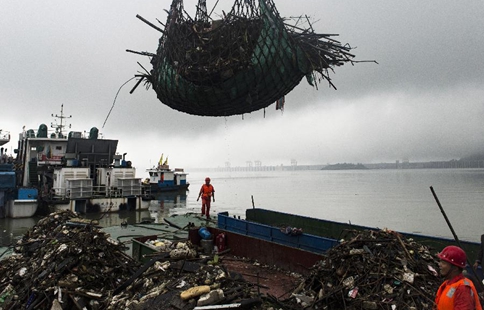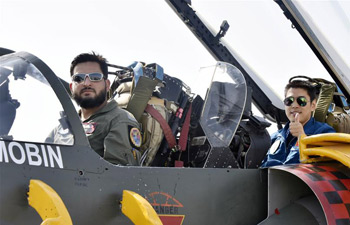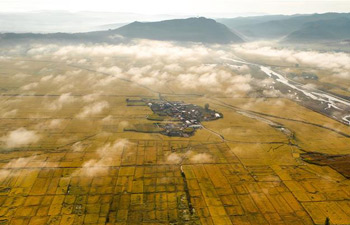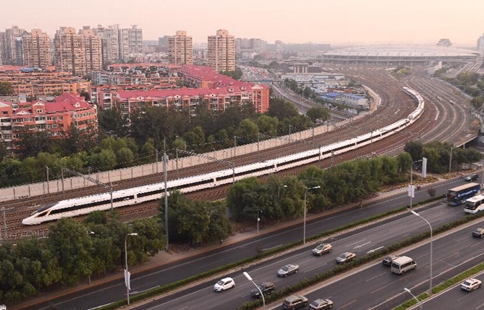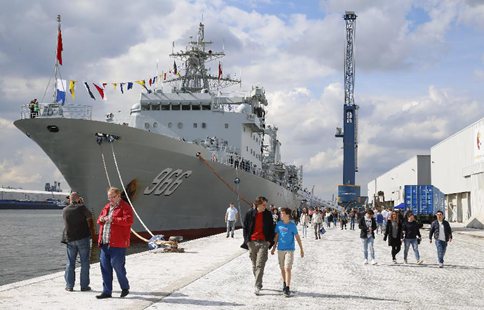
A Sudanese soldier collects weapons voluntarily surrendered by residents in South Darfur State, Sudan, on Sept. 23, 2017. Sudanese government's plant to collect arms from local residents and armed groups in Darfur has gained initial results, officials have said. The plan, launched in August, is designed to eliminate one of the main causes of instability in the war-torn region. (Xinhua/Mohamed Khidir)
NYALA, Sudan, Sept. 23 (Xinhua) -- Sudanese government's plant to collect arms from local residents and armed groups in Darfur has gained initial results, officials have said.
The plan, launched in August, is designed to eliminate one of the main causes of instability in the war-torn region.
The government plan includes two phases: the first is providing financial compensation for each piece surrendered voluntarily by the citizens, armed groups and irregular military groups; the second is implementing a compulsory law that includes punishment to the violators.
No doubt, many obstacles still exist to the implementation of the plan. Owning weapons is part of the culture and tradition for Darfur residents, and the armed groups and irregular military forces are unwilling to surrender their weapons.
There is fear that the plan could lead to violent clashes between the armed groups and the government forces, once the phase of forcible collection begins.
Nevertheless, local officials in Darfur region said that initial indications showed positive response by local resident to the arms collection plan.
"Though we are in the first phase of arms collection, yet there is a great response from the citizens. So far, we have received more than 2,000 pieces of weapons," Adam al-Faki, South Darfur State's Governor, said at a press conference in the state's capital Nayala Saturday.
"The weapons which we have received include heavy weapons such as Dushka (heavy machine gun), mortar and cannons, which were in the possession of the citizens, although they were supposed to be available only to regular forces," he noted.
Despite some difficulties in executing the arms collection plan in Darfur, Faki reiterated the government's determination to achieve the plan's goal of making Darfur free of arms.
"We expect some to intend to hide their weapons or sell them to parties outside Sudan by taking advantage of the joint border between Darfur and some neighboring countries, but in the end the plan will achieve the main objective which is the disappearance of armed manifestations in Darfur," the governor said.
Meanwhile, most of the Sudanese forces are participating in the arms collection campaign in Darfur.
"We are contributing to the arms collection campaign in all Darfur states," Major General Essam-Eddin Saleh Fidail, second commander of the Rapid Support Forces (RSF), an affiliate to the Sudanese army, told reporters at Um Al-Qura area in South Darfur State Saturday.
"There is a strong response from the citizens to this campaign. Our forces have so far collected around 700 Kalashnikov rifles, 300 GM-3 rifles, 2 cannons and a large number of light weapons," he said.
Hamid Abdalla Hammad, deputy chairman of the ruling National Congress Party (NCP) in South Darfur State, told Xinhua that the reasons behind the citizens' positive response is because the residents there have become reassured that there is stability and the rebellion has declined.
Salah Abbaker, a resident from South Darfur State, told Xinhua that he supports the arms collection campaign, as the spread of arms was one of the reasons of Darfur conflict.
"Collection of arms will benefit the citizens and contribute to the stability and development of Darfur. We support the arms collection campaign," said Abbaker.
On Aug. 7, the Sudanese government launched a campaign for collecting arms and unlicensed vehicles in the Darfur region.
The government does not have official figures for the number of weapons owned by the civilians in Darfur, but UN statistics estimated it to be around 2 million pieces.
The Darfur region has witnessed an armed conflict between the Sudanese army and rebel groups since 2003, which has left around 300,000 people dead and nearly 2.5 million displaced.




